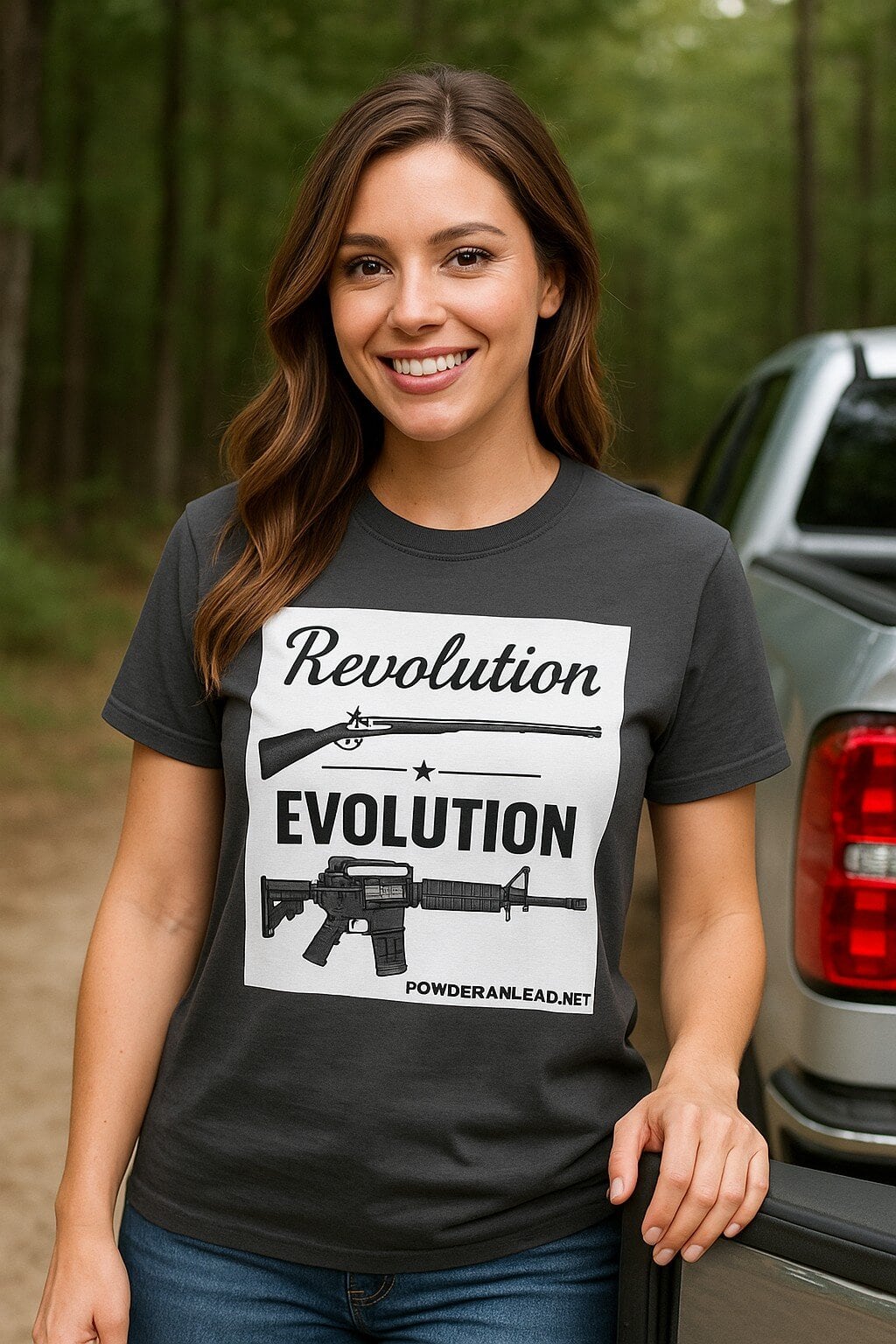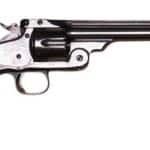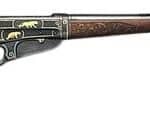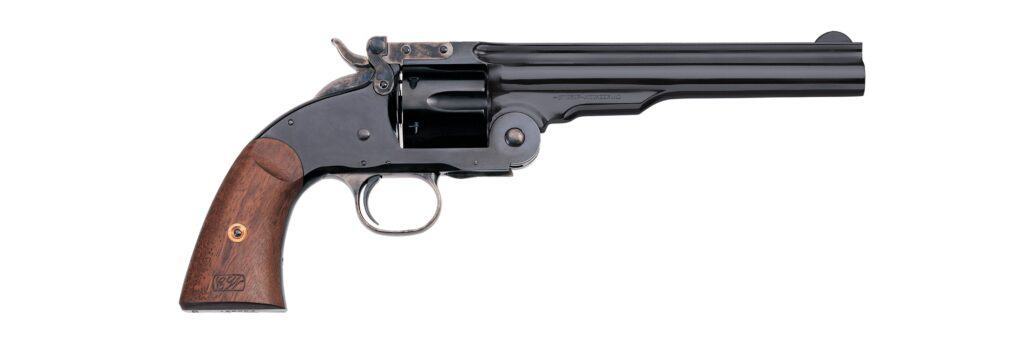
Introduction
One could be excused for harking back to the times of the Old West, when guns were as much a man's trusty companion as his horse, and few firearms represent this era better than the Schofield Smith & Wesson Model 3. This thing made a real difference, especially to those who favored fighting from up high on their horse.
The Schofield Smith & Wesson Model 3
Before we delve into the gritty details of this fine instrument, a tip of the hat must be extended to its forerunners. The Smith & Wesson Model 3, introduced in 1869, set a new standard in firearm design. This single-action, top-break, .44 caliber revolver was revolutionary. The top-break design allowed for the simultaneous ejection of spent cartridges – a huge leap forward in reloading speed. The original Smith & Wesson Model 3, often referred to as the "American Model," was chambered for .44 caliber cartridges. Specifically, it was designed for the .44 S&W American, a proprietary cartridge developed by Smith & Wesson. This was a significant development in firearm history as it was among the first cartridges to use centerfire ignition, which was a more reliable system compared to the rimfire and percussion cap ignition systems prevalent at the time.
As ground-breaking as the Model 3 was, Major George W. Schofield of the 10th Cavalry saw room for improvement. He proposed modifications to the Model 3, creating what would be known as the Schofield Model 3. With its modified latch assembly, the Schofield could be opened with one hand, a crucial advantage when the other hand was occupied with the reins of a galloping horse.
The Military
In the annals of U.S. military history, 1870 marked a pivotal moment as the U.S. Army adopted the Smith & Wesson Model 3 in .44 S&W American, making it the first standard-issue cartridge-firing revolver to grace the holsters of our servicemen. Prior to this, our boys were toting around black powder cap-and-ball revolvers, which were, to put it kindly, as slow as molasses in January, complicated, and didn't take too kindly to a drop of rain.
Fast forward to 1875, when Major George W. Schofield got his hands on the Model 3 and reckoned he could make a few improvements. The U.S. Ordnance Board liked what they saw and signed a contract with S&W to supply these Schofield revolvers to the military. The catch was they needed the guns to shoot the .45 Colt ammo already in the military's supply chain. S&W, however, had their own ideas and developed the .45 Schofield round, which was a hair shorter than the Colt. More on that round later...
Well, it didn't take long for folks to realize that the two rounds wouldn't swap back and forth in the Schofield like they would in the Colt. With that, the government opted for the shorter .45 Schofield as the standard. But with a surplus of the longer .45 Colt rounds in the stores, they stuck mostly with the Colt. Some reckon there was a bit of a conflict of interest here, as Major Schofield had patented his lockwork and was making a dime off each gun sold. To top it off, his older brother was at the helm of the Army Ordnance Board.
Many units favored it over the Colt Single Action Army due to its ease of reloading and handling while riding. The military continued to show these revolvers a good deal of action in the Indian Wars, and there were even reports of them being used as late as the Spanish-American War and Philippine-American War.
The .45 Schofield: a new round
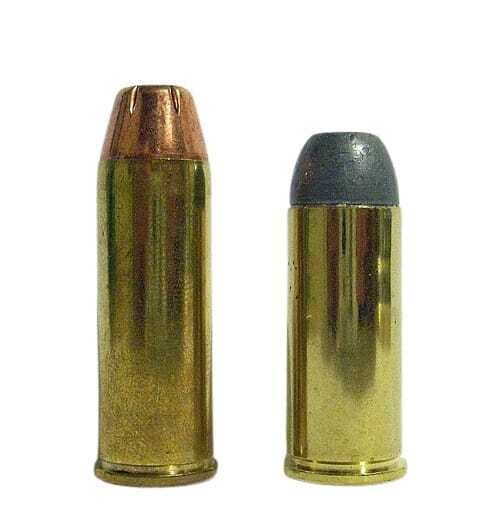
"45 Schofield" courtesy of Harvey Henkelmann under Creative Commons Attribution 3.0
A hallmark of the Schofield was its adoption of the .45 Schofield round, a slightly shorter and less powerful version of the .45 Colt. While not as potent as the .45 Colt, the .45 Schofield had plenty of stopping power for its day and age.
Smith & Wesson recognized the necessity of a shorter cartridge that would eject and reload more smoothly in their top-break design, keeping the calvaryman in the fight longer. This is what lead to the development of the .45 Schofield.
Compared to the .45 Colt, the .45 Schofield was a smidgen shorter, boasting a length of 1.4 inches against the Colt's 1.55 inches. While the reduction may seem insignificant, in the heat of a skirmish, this slight edge in reloading speed could spell the difference between survival and an untimely demise. The .45 Schofield delivered a 230-grain bullet at a velocity of roughly 750 feet per second. Despite its somewhat diminished power compared to the .45 Colt, the .45 Schofield round was still an effective man-stopper, a feature that didn't go unnoticed by those tough frontiersmen, always ready for a quick draw under the high noon sun.
While it might not have had the raw power of some of its contemporaries, the Schofield shone in terms of reliability and ease of use. In the heat of battle or the adrenaline-fueled moments of a frontier skirmish, these factors could make all the difference.
Famous users
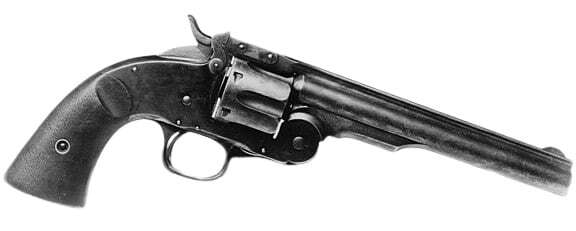
The Schofield, like its predecessor, quickly gained a reputation among users of the time on both sides of the law. It's been said that the famed outlaw Jesse James favored a pair of Schofields. Ironically, one of his own gang members, Bob Ford, used one to end James' life. Wyatt Earp, too, reportedly used a Schofield during the infamous Gunfight at the O.K. Corral. John Wesley Hardin, Pat Garrett, Teddy Roosevelt, Virgil Earp, Billy the Kid, and a host of others packed a Schofield.
The Russian model
The tale of the Smith & Wesson Model 3 twists and turns like a wild river, and it took a decidedly exotic twist when the Russian Model made its debut.
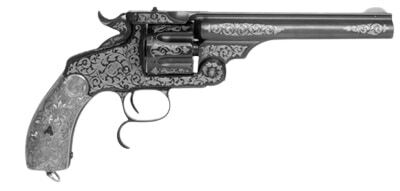
Spurred by a sizeable order from the Russian government back in the 1870s, this was no off-the-shelf Model 3, mind you. Those hardy Russian frontiersmen had some ideas of their own and asked for modifications. They had a hankering for a trigger guard spur—something to steady a man's grip when he's firing from a galloping horse. They wanted better sights and a hammer notch, making it double as a rear sight when the hammer was cocked for business. But the biggest change? That was the .44 Russian cartridge. This was a round with more punch and more accuracy than the original .44 American, and it set the Model 3 on a new path. The Russian Model was more than just a revolver — it was a testament to the Model 3's versatility and its appeal around the globe.
New Model 3
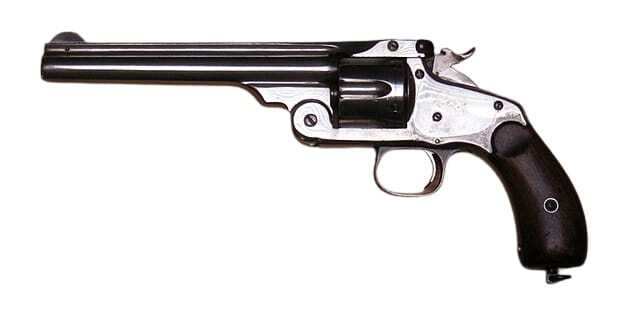
The story of the Model 3 takes another twist in 1877. Smith & Wesson decided to put the American, Russian, and Schofield models out to pasture, making way for a fresh-faced newcomer, the New Model No. 3.
This whippersnapper was a spitting image of the original No. 3 in terms of frame and cylinder length. But the folks at Smith & Wesson are nothing if not restless tinkerers.
They went back to the drawing board and whipped up a "Frontier" version of the New Model No. 3. This model boasted a longer frame and cylinder, making it fit for the longer .44-40 Winchester Center Fire cartridges, just what the doctor ordered for the settlers and lawmen out on the frontier.
While it was set up for the .44 Russian (you'll often see barrels marked as 44 S&W, as S&W was trying to leave their own brand on the .44 Russian cartridge), Smith & Wesson weren't about to leave their customers wanting. They made the New Model No. 3 available in a host of other calibers. There was the .44-40 Frontier model for those needing a bit more firepower, the .32-44 and .38-44 Target models for the sharpshooters, and let's not forget the rare-as-hen's-teeth .38-40 Winchester model.
Modern Times
Fast forward to the present day, and the Schofield Smith & Wesson Model 3 is a sought-after item among collectors and enthusiasts of Old West firearms. Original pieces in good condition command a high price, a testament to the enduring allure of this piece of history. Modern reproductions are available for those more interested in shooting than collecting, and many a cowboy action shooter has relied on the quick-reloading Schofield to claim victory in competition.
Modern reproductions, such as those from Uberti and Taylor's & Co, painstakingly replicate the feel and function of the original. Chambered in the .45 Colt, .38 Special, and .44-40, these reproductions offer an experience close to the original, albeit with the added convenience of using more readily available ammunition.
Conclusion
In sum, the Schofield Smith & Wesson Model 3 is a fine example of firearm ingenuity meeting practical needs, a testament to the innovative spirit of the Old West. Whether in the hands of a hardened frontier lawman or a modern cowboy action shooter, the Schofield stands as a true icon of American firearms history. Its legacy endures, linking the dusty trails of the past with the gun ranges of the present, and reminding us of a time when a quick hand and a steady aim were the true measure of a man.
The Smithsonian Institute has one, see it here.
If you know of any forums or sites that should be referenced on this listing, please let us know here.

